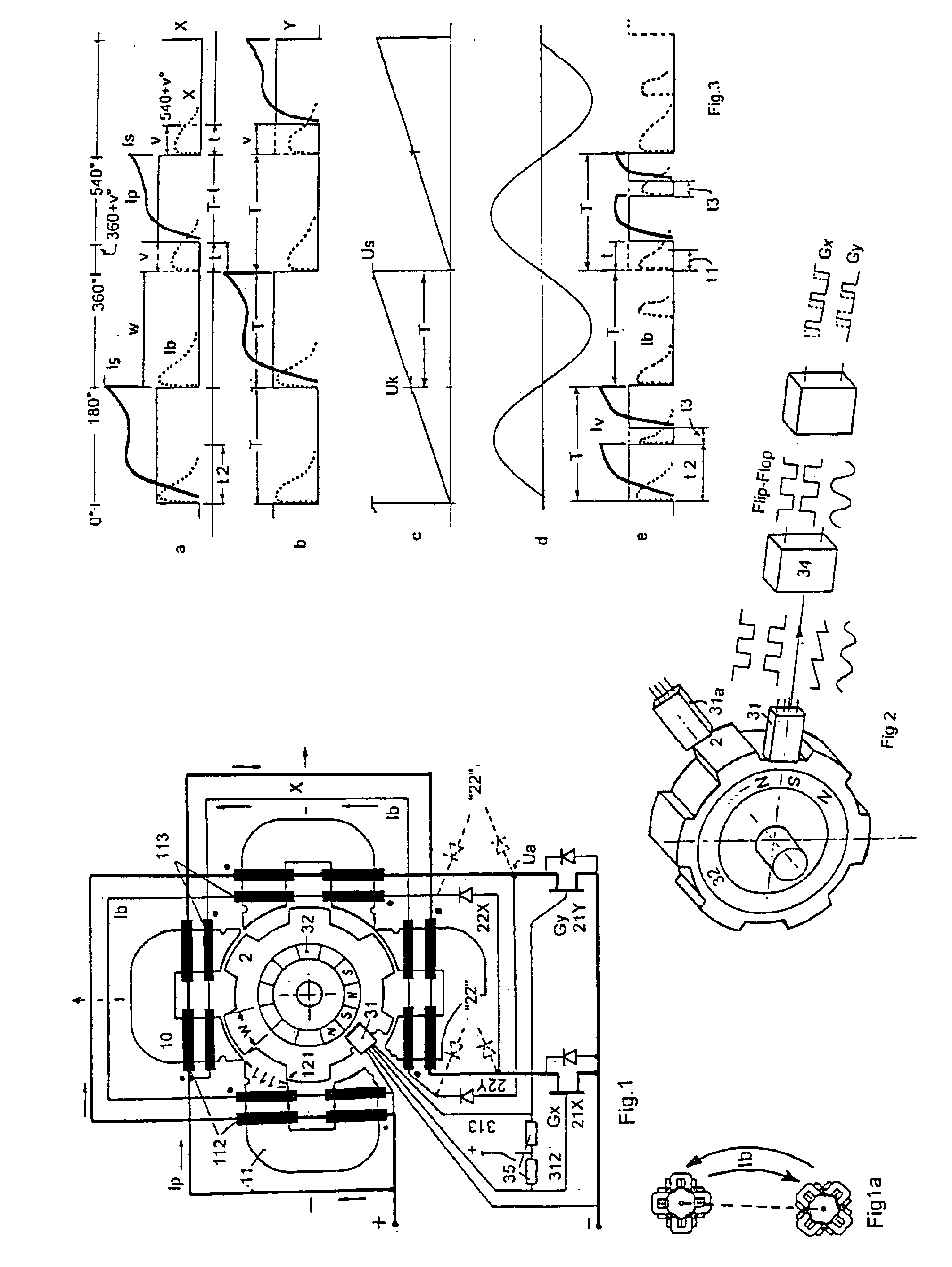Method and circuits for controlling the power of an electronically switched, two-phase reluctance machine
- Summary
- Abstract
- Description
- Claims
- Application Information
AI Technical Summary
Benefits of technology
Problems solved by technology
Method used
Image
Examples
Embodiment Construction
FIG. 1 shows such a simple but operative motor, for an easier understanding in a compressed form (magnetic circuit and circuit). Each individual of the eight main windings (112) and secondary windings (113) is represented as an inductive resistor fixed on the sketched magnet yoke 11. The main current paths (see “definitions”) are represented by fat or thicker lines in the accompanying drawings. The simplest circuit (see FIG. 1) of an uncontrolled SR motor works in the sense of the invention, as known from the prior art, with a Hall sensor 31 with two complementary “flip-flop” open-collector outputs 312, 313 as phase control which has been realistically sketched in the vicinity of the rotor. The gate electrodes of the power switches 21X, 21Y, which receive voltage for example over the polarization pull-up resistor 35, are alternatively short-circuited to the minus potential (ground) over the Hall sensor outputs 312, 313 so that the main current is thus interrupted. For an uncontrolle...
PUM
 Login to View More
Login to View More Abstract
Description
Claims
Application Information
 Login to View More
Login to View More - R&D
- Intellectual Property
- Life Sciences
- Materials
- Tech Scout
- Unparalleled Data Quality
- Higher Quality Content
- 60% Fewer Hallucinations
Browse by: Latest US Patents, China's latest patents, Technical Efficacy Thesaurus, Application Domain, Technology Topic, Popular Technical Reports.
© 2025 PatSnap. All rights reserved.Legal|Privacy policy|Modern Slavery Act Transparency Statement|Sitemap|About US| Contact US: help@patsnap.com



